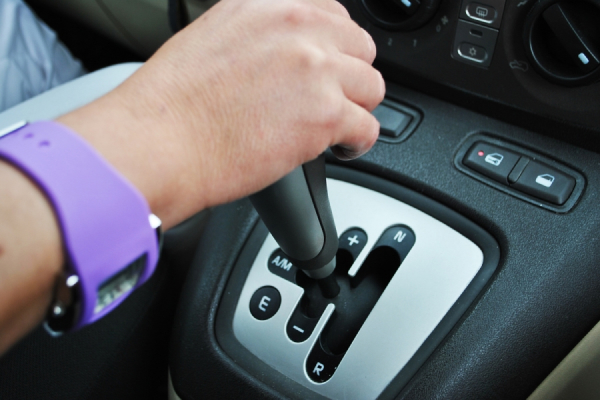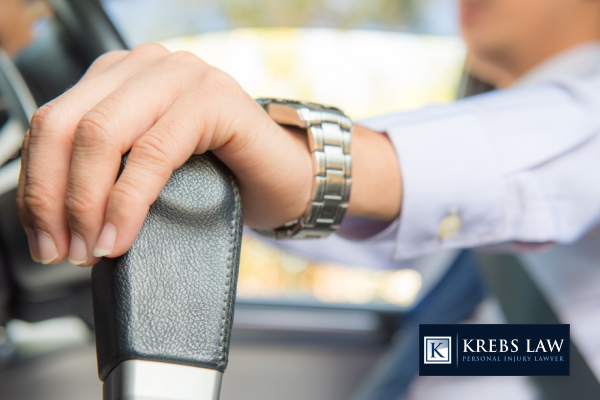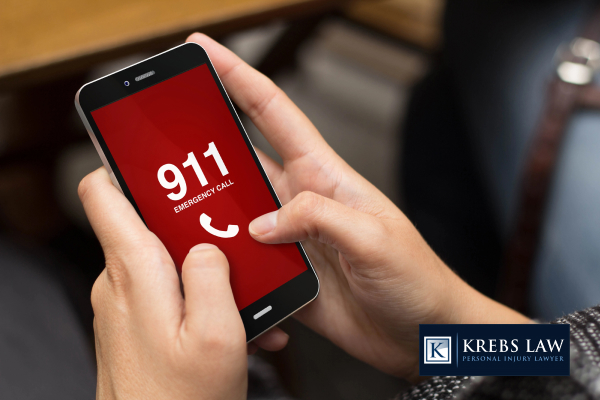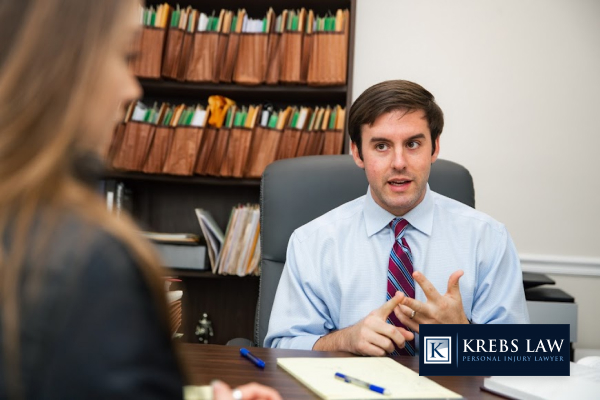This page was written, edited, reviewed & approved by JR Krebs following our comprehensive editorial guidelines. JR Krebs, the Founding Partner, has years of legal experience as a Personal Injury attorney. Our last modified date shows when this page was last reviewed.

Backing up a vehicle may seem simple, but when it comes to fleet drivers, it can lead to serious damage and injury. These accidents often happen in parking lots, delivery areas, and tight spaces where blind spots, limited visibility, and rushed decisions increase the risk of a crash. A moment of distraction or poor judgment while backing can cause harm to pedestrians, other vehicles, or property.
Krebs Law Personal Injury Lawyers helps people who have been injured in backing collisions involving fleet or large vehicles. Our legal team understands how devastating these accidents can be. We also know that companies don’t always take full responsibility when their employees cause harm. If you've been hurt, you may have a right to compensation.
A backing accident happens when a vehicle moves in reverse and strikes a person, object, or other vehicle. These crashes may seem minor, but when fleet vehicles or large trucks are involved, the outcome can be severe. Unlike small cars, bigger vehicles have larger blind spots, more weight, and a wider path of movement when reversing.
In many cases, the driver cannot see clearly behind the vehicle, especially if there are no sensors, mirrors, or hand signals in use. Add distractions like cell phones, poor training, or tight deadlines, and the risk grows even higher.
Backing crashes are common in delivery areas, alleys, warehouse lots, and commercial properties. They happen fast and are often preventable. Companies must provide training, enforce safety rules, and teach drivers how to prevent backing accidents, especially when working in crowded or unpredictable areas.

Backing accidents involving fleet vehicles often happen because of preventable mistakes. These crashes usually occur in busy or tight areas where quick decisions, poor training, or distractions can lead to real harm. Most of the time, the driver does not see everything behind the vehicle, or fails to take proper safety steps before backing up.
One of the most common causes is poor visibility. Blind spots in large vehicles are much bigger than in regular cars, especially directly behind the back bumper. Without the use of mirrors, cameras, or hand signals, it becomes easy to miss a person, object, or other vehicle in the path.
Another major factor is a lack of proper training. Many fleet drivers are not shown how to prevent backing accidents or are under pressure to finish jobs quickly. Relying too much on sensors or ignoring manual checks only adds to the danger. Cell phones, loud environments, or tight spaces also create distractions that make crashes more likely.
Liability in a fleet vehicle backing crash depends on who was responsible for causing the incident. In many cases, more than one party may share fault.
The driver of the vehicle is often the first person examined after a backing collision. If they failed to check their surroundings, ignored blind spots, used poor judgment, or didn’t follow safety procedures, they may be directly liable.
Many drivers are distracted by cell phones, rushing to finish routes, or unaware of people or objects in their path. If the driver's actions were careless or violated company policy, they can be held accountable for any injuries or damage caused.
In most cases, the company that owns the vehicle can also be held responsible. If the business failed to provide proper training, didn't maintain the truck, or allowed unsafe practices, they may be legally at fault.
Employers are responsible for the actions of their employees while they’re working. If a company pushed a driver to finish quickly or ignored complaints about safety, they may be required to pay for damages. Failing to instruct drivers on how to avoid backing or not providing mirrors and warning systems can also show negligence.
Sometimes, other vehicles or people play a role in a backing accident. For example, a passing car that speeds through a parking lot or a pedestrian walking behind a reversing vehicle without looking could share fault.
In other cases, a company responsible for maintaining the property may be to blame. If poor lighting, blocked views, or a broken camera system contributed to the crash, that party could be held responsible. Proving third-party fault often requires a deeper investigation of the accident scene.

Knowing what to do after a backing accident can protect your health, safety, and legal rights. Here are the steps to follow:
What is a safe following distance when driving near fleet vehicles?
Keeping a safe following distance behind a fleet vehicle is important, especially if it might stop suddenly or begin to back up. A good rule is to stay at least one full car length for every 10 mph you’re traveling. This gives you time to brake or react if the driver makes a sudden move or begins to pull into reverse.
Can a backing accident happen even if the vehicle had a backup camera?
Yes. Backup cameras help, but they don’t remove all blind spots or obstacles. If a driver relies too much on the screen and fails to check mirrors or communicate with others nearby, a crash can still occur. Technology should support safety, not replace smart driving habits.
Is it the driver’s fault if I got hurt while walking behind the vehicle?
It depends on the details. If the driver failed to check for pedestrians, didn’t use a spotter, or backed up without warning, they may be at fault. But if you walked behind the vehicle suddenly or in a restricted area, that could also matter. A full investigation helps determine liability.
What if the driver didn’t see me because of a blind spot?
That doesn’t always excuse the driver. Blind spots are a known danger, especially in large vehicles, which is why drivers are trained to check them carefully before moving. Failing to do so, especially during a backing maneuver, can still make the driver or employer legally responsible.
Can backing accidents damage more than just the car?
Yes. A strong impact can bend the wheel, damage suspension systems, or crush items inside the vehicle. You can include repairs or replacements for these items in your compensation claim, even if the outside damage seems minor.

If you were injured in a backing accident involving a fleet vehicle, you don’t have to face the legal process alone. These cases can be complex, especially when drivers, employers, and insurance companies try to avoid responsibility. You deserve someone who will fight for your rights and make sure your voice is heard.
Krebs Law Personal Injury Lawyers takes these cases seriously. We know how to investigate backing collisions, collect key evidence, and build a strong case on your behalf. From the moment you call, we work to protect your health, your finances, and your future.
Contact us today for a free, no-obligation consultation. We’ll listen to your story, explain your options, and help you pursue the fair compensation you deserve. There are no fees unless we win your case, because your recovery always comes first.


"*" indicates required fields

"*" indicates required fields